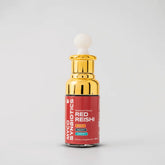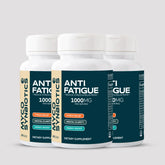🍄 MUSHROOM WELLNESSS
●
🇵🇰 PROUDLY MADE IN PAKISTAN
●
🌿 POWERFUL ADAPTOGENS FOR RESILIENCE AND VITALITY
🍄 MUSHROOM WELLNESSS
●
🇵🇰 PROUDLY MADE IN PAKISTAN
●
🌿 POWERFUL ADAPTOGENS FOR RESILIENCE AND VITALITY
Product Description
xINCLUDES : Pink Oyster Mushroom Grain Spawn 1.5kg (450)
Boost your fungal cultivation with our high-quality spawn—selected for strong yields and healthy growth.
Ideal Mushroom Growing Conditions
- Button Mushrooms: 18–22°C, 80–95% humidity
- Shiitakes: 15–20°C, 80–90% humidity
- Oysters: 18–20°C, 80–90% humidity
- Lion's Mane: 18–20°C, 75–80% humidity
- Red Reishi: 20–25°C, 75–80% humidity
Grow smarter with the right climate and top-grade spawn!
HOW TO USE
Growing mushrooms from fresh spawn involves sterilizing a substrate, inoculating it with the spawn, and providing optimal conditions for mycelial growth, ultimately leading to mushroom fruiting.
-
Spawn Ratio:
Farmers can mix 2–4% inoculated grain spawn relative to the total weight of the sterilized substrate for optimal growth and yield. - Only open your spawn bag when you are ready to use it. Opening it prematurely will increase the risk of contamination.
-
Once your spawn bag open use in same day.
- Before inoculation, wear gloves and disinfect your hands and the outer surface of the spawn bag with isopropyl alcohol to prevent contamination.
STORAGE
Grain spawn will store for 4-6 months in a refrigerator while sawdust spawn will store for six months to a year. The fresher the better, but mycelium is pretty resilient. If you don’t get around to inoculating right away, tuck it away in your refrigerator at 6 Celsius Temp until you’re ready.
- Choosing a selection results in a full page refresh.















